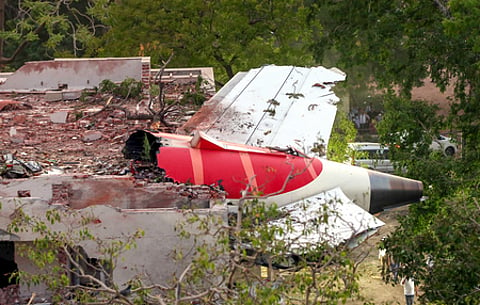Air India 787 crash caused by fuel switch mistake? Investigators find critical clue
Experts probe whether fuel shutoff controls were involved in deadly takeoff tragedy

Dubai: Investigators looking into the deadly June 12 crash of Air India Flight AI-171 have begun focusing on a potentially crucial element: the aircraft's engine fuel control switches.
According to multiple media reports, citing aviation sources, the switches — which regulate the flow of fuel to each engine — are now at the center of the inquiry into what caused the Boeing 787 Dreamliner to plummet seconds after takeoff.
A report by The Air Current, an aviation-focused publication, cites multiple individuals familiar with the ongoing investigation, suggesting that analysis of the aircraft’s black box data has pointed to possible movement of the switches.
However, it remains unclear whether the controls were shifted intentionally, mistakenly, or as a result of another malfunction before or during the fatal loss of thrust.
Fuel supply cut to engines?
Each of the Dreamliner’s two engines has a switch with two positions: RUN and CUTOFF. Shifting a switch to CUTOFF while airborne would immediately shut down fuel to that engine, halting thrust and disabling the generators that supply electricity to much of the plane’s systems — including some cockpit instruments.
John Cox, a U.S.-based aviation safety expert and former pilot, explained that these switches are deliberately designed to prevent accidental activation. “You can’t just bump them and expect them to move,” he told The Air Current. The switches are primarily used during ground operations for starting or shutting down engines.
Adding to the intrigue is the lack of any formal safety communication from Boeing or GE — such as a multi-operator message (MOM) — since the initial black box data was examined by Indian authorities on June 25. Aviation experts say this silence may indicate that a mechanical fault is not the leading theory behind the crash.
India prepares to release first findings
The Aircraft Accident Investigation Bureau (AAIB) of India has reportedly submitted its preliminary findings to the Ministry of Civil Aviation. As per international norms set by the International Civil Aviation Organization (ICAO), a public release is expected within 30 days of the accident — likely by July 11.
Flight AI-171, bound for London-Gatwick, crashed shortly after lifting off from Ahmedabad, killing over 270 people on board. One passenger miraculously survived the crash, which occurred within just 35 seconds of takeoff.
The probe is being led by Indian aviation authorities but includes experts from the U.S. National Transportation Safety Board (NTSB), the Indian Air Force, Hindustan Aeronautics Limited (HAL), and representatives from Boeing — since the 787 is a U.S.-manufactured aircraft.
Safety concerns, public scrutiny
While definitive conclusions are yet to emerge, early signs point toward a possible human or systems error involving the fuel management controls. Reuters, citing sources close to the probe, echoed The Air Current’s findings, confirming that simulations and flight recorder data have narrowed the investigation’s scope to the fuel switch systems.
The incident has triggered strong public reaction, especially amid a wider effort by Tata Group to revamp Air India’s global reputation. The crash has prompted a parliamentary review of national aviation safety protocols, with civil aviation officials expected to face questioning later this week.
The government has faced mounting criticism for its tight-lipped handling of the tragedy. Just one press conference has been held since the incident — and reporters were not permitted to ask questions.
Though a clearer picture may emerge once the preliminary report is released, investigators caution that conclusions are still being finalized. As new data is analyzed and cross-verified, the story behind one of India’s deadliest aviation accidents in recent years continues to unfold.
Sign up for the Daily Briefing
Get the latest news and updates straight to your inbox




